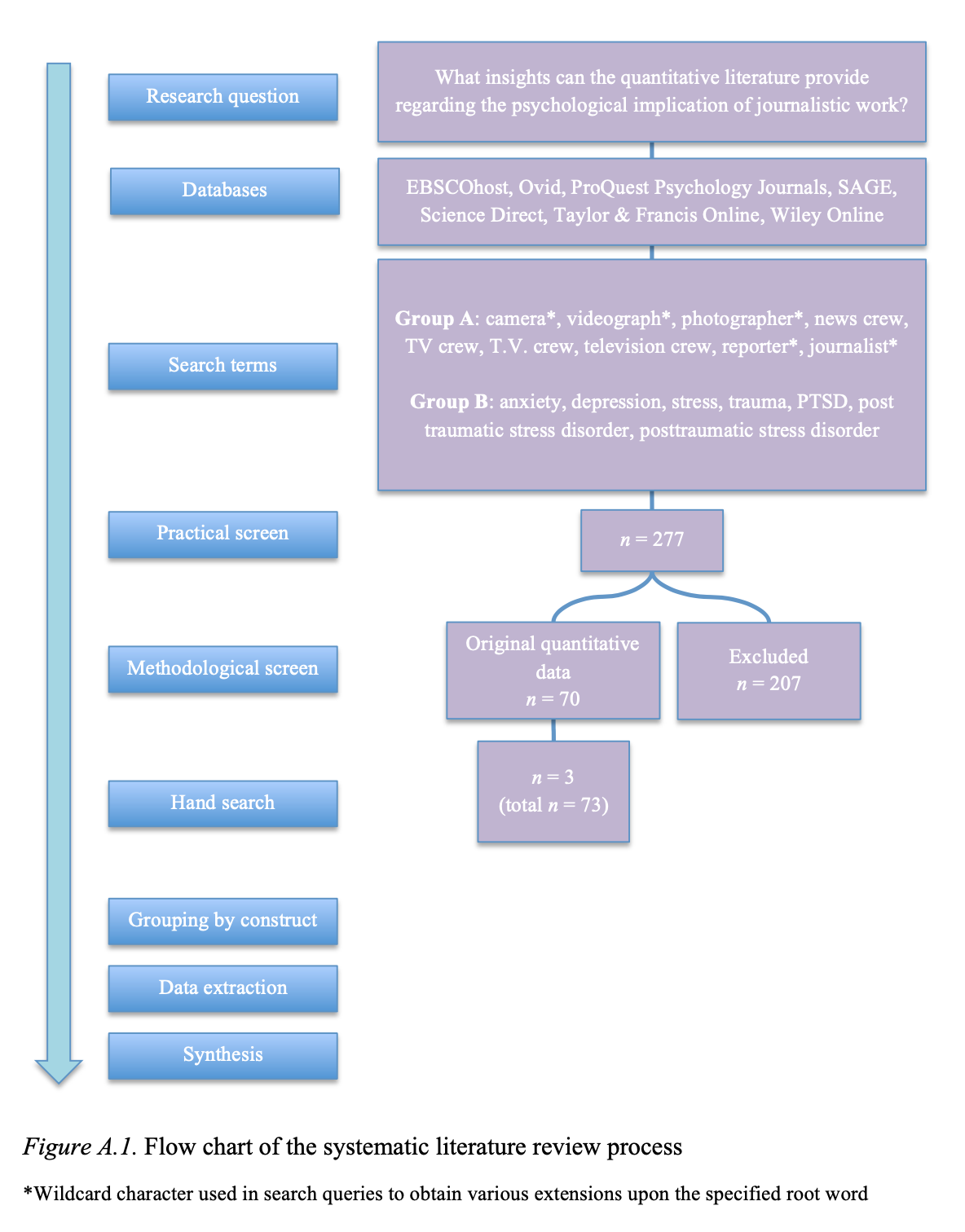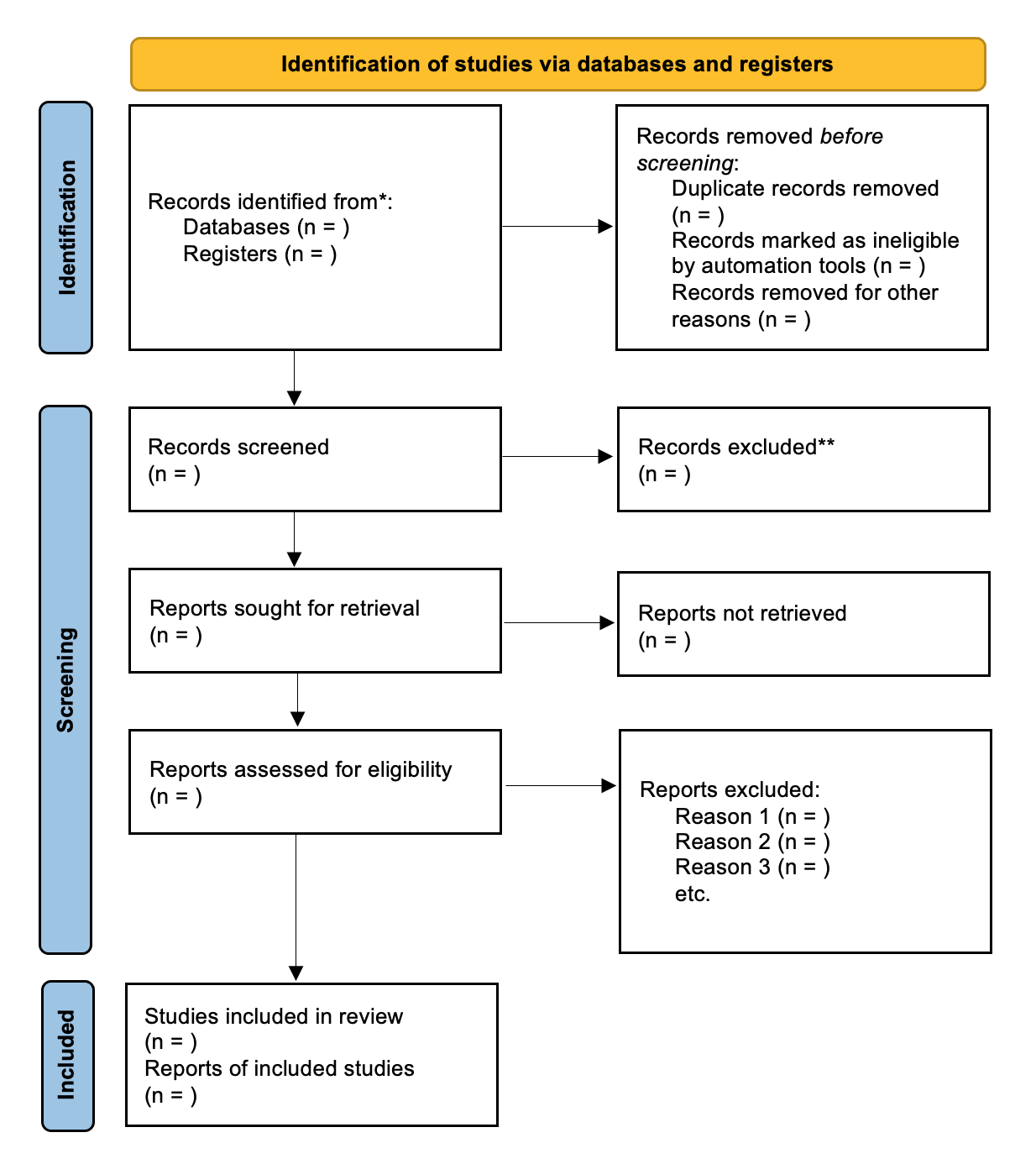
PRISMA flow diagram templates for literature reviews
When writing up the method of a ‘rigorous’ literature review you can present information about the literature search and screening process concisely using a flow diagram.
Rigorous reviews are based on a systematic and transparent method (i.e. they are replicable). This includes systematic literature reviews (SLRs), rapid evidence reviews, and scoping reviews. It doesn’t include narrative reviews.
When I started out conducting SLRs in around 2012, and until relatively recently, I preferred creating my own flow diagrams. As an example, I developed this flowchart for my Ph.D. thesis and have adapted it as needed for many subsequent peer-reviewed publications:

When I started out, I am not sure that there was a widely used flow diagram template that I could have adopted. But if there was, I wasn’t aware of it. I learned literature review methods and reporting through doing. I didn’t have mentors or colleagues who specialised in literature review methodology. I just read other reviews and methods books and worked out the best processes and ways of reporting findings as I went.
In hindsight, the benefits of creating a custom flow diagram seemed to me to be the ability to:
- totally control the style
- add the method sections / criteria that work best for you (I opted to include additional scope and search information)
- think critically about what information is most useful for the reader / reviewer for this particular review.
In the last couple of years I have moved away from custom processes in my work in instances where an acceptable template is available. I reassessed my work values and started focusing my efforts and talent on content. I went from perfectionist mode to embracing the notion of minimum viable product (MVP); aiming to create something useful and move on to the next interesting thing. I started to notice where I had been overcapitalising in my work with diminishing returns. One of these areas was lecture slide presentations when I was teaching psychology, but that’s a whole other story.
The good news is that PRISMA have multiple review flow diagram templates that you can download for free in Word document format and populate.
If you are conducting a review, you should be thinking about how your work compares to some broader international quality standards like the PRISMA guidelines. If you are writing a review for a thesis or a publication, you’ll probably cite these guidelines in your method section.
I generally say something like: This approach to the SLR process is highly congruent with the steps outlined in the Preferred Reporting Items for Systematic Reviews and Meta-Analyses checklist for SLRs and meta-analyses (Moher et al., 2009).
The PRISMA flow diagrams are specifically for SLRs. But they are useful and adaptable for other rigorous reviews. My own recent examples using the PRISMA templates are from my day job and not yet publicly available. So for comparison purposes, this is what the PRISMA templates look like:

The benefits of using the PRISMA flow diagram templates include:
- spending more energy on stuff that really matters like content as opposed to formatting and style
- they provide an indication of the kind of information that you should be reporting
- standardisation of reporting across research outputs
- makes it easier to know where to find relevant info when reading or reviewing research outputs
- makes comparisons across studies easier.
More advanced tip:
If you are using Covidence to conduct your review, I recommend using the built in feature that software provides that can generate a flow diagram for you (you can still edit as needed). The formatting of the Covidence flow diagrams is pretty. 🙂
Author note
If you are keen to see some example review papers, check out my publications list.
Reach out if there is an aspect of literature review methodology that you think would be a good topic for me to cover. Hit me up if you have some tips of your own to share with me.
